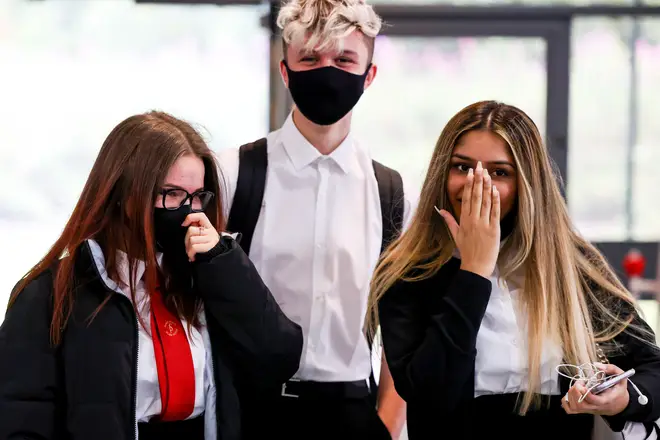
Nick Abbot 10pm - 1am
28 August 2020, 22:34

Secondary schools in local lockdown areas could have to use a "rota system" to limit the number of teenagers attending at any one time, with teachers and pupils required to wear face coverings in communal areas, according to new Government guidance.
The staggered approach will limit the amount of people students come into contact with, and will help break transmission chains by giving enough time at home for symptoms to become apparent, said the Department for Education (DfE).
Education Secretary Gavin Williamson said any changes to school attendance "will only ever be an absolute last resort".
He added: "However, it is important that both Government and schools prepare for a worst case scenario, so this framework represents the sensible contingency planning any responsible government would put in place."
The lengthy guidance, issued on Friday ahead of schools in England reopening for autumn term next week, said schools should base their plans on a four-tier system, and the extra measures for secondary schools should be introduced at the second tier.
It said: "Schools should ideally operate a rota system that means pupils spend two weeks on-site followed by two weeks at home.
"This allows more than sufficient time for symptoms to present themselves and for pupils to self-isolate and avoid transmitting the virus to others.
"However, schools can choose to operate a one-week rota (so, five days on-site, followed by nine days at home) if this is necessary for the effective delivery of the curriculum."

Getting children back in schools will benefit their mental health, education secretary says
The guidance continued: "In addition, in all areas of national government intervention, at schools where students in year seven and above are educated, face coverings should be worn by adults and pupils when moving around the premises, outside of classrooms, such as in corridors and communal areas where social distancing cannot easily be maintained."
The DfE said any suspected coronavirus cases will need to self-isolate and get tested.
It added: "If a case is confirmed, local public health officials will work with the school to take appropriate measures, including asking all members of a pupil's bubble to isolate for 14 days and access remote education while other pupils continue attending."
All schools remain open at tier one, while tiers three and four mean more stringent restrictions such as closures to all but pupils in vulnerable groups or children of key workers.
Labour's shadow education secretary Kate Green called the timing of the announcement "insulting".
She tweeted: "This is so insulting to heads and staff who've worked flat out over the summer holiday, and are now expected to cope with yet more new guidance just hours before the bank holiday weekend and only days before term starts."
Geoff Barton, general secretary of the Association of School and College Leaders, welcomed the guidance but criticised the timing.
He said in a statement: "To wait until the Friday night before most schools return isn't the Government's finest moment.
"Obviously, schools haven't had any chance whatsoever to incorporate this into their planning and will now have to revisit the plans they have put in place.
"In any event, it is a step in the right direction."
This is so insulting to heads & staff who’ve worked flat out over the summer holiday, and are now expected to cope with yet more new guidance just hours before the bank holiday weekend and only days before term starts https://t.co/C570rdAA3L
— Kate Green (@KateGreenSU) August 28, 2020
Paul Whiteman, general secretary of school leaders' union NAHT, added: "We've been calling for the Government to publish a Plan B for several weeks.
"Finally it is here, but another late night publication is fairly typical of what we've become used to.
"School leaders have a lot of responsibility resting on their shoulders at the moment. These plans will ultimately rely on effective decision making, informed by reliable data about regional transmission rates.
"The desire to keep schools open as long as possible is one we share, yet it must continue to be balanced against the need to keep pupils, staff and parents safe as we move into the autumn and winter months."
At the moment the evidence is pretty stable, but it can be very reassuring in those enclosed environments for children and for teachers as well, to know that people are taking precautions."
She said the advice could change in the future.
The DfE also updated its guidance on music performances in schools, saying singing, wind and brass playing should not take place in choirs or ensembles without significant space, plenty of natural air flow for players and audiences and "strict social distancing and mitigation".
It added: "Pupils should be positioned back-to-back or side-to-side when playing or singing (rather than face-to-face) whenever possible.
"Position wind and brass players so that the air from their instrument does not blow into another player."